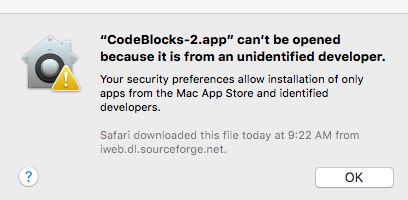This is an update of a post that originally appeared on January 10, 2014.
I maintain statistics for each of my books that are based on reviews and reader e-mails (so those e-mails you send really are important). These statistics help me write better books in the future and also help me determine the sorts of topics I need to address in my blog. It turns out that one of the most commonly asked questions is why a reader’s hand typed code doesn’t work. Some readers simply ask the question without giving me any details at all, which makes the question impossible to answer. In some cases, the reader sends the hand typed code, expecting that I’ll take time to troubleshoot it. However, this isn’t a realistic request because it defeats the very purpose behind typing the code by hand. If I take the time to diagnose the problems in the code you typed, I’ll be the one to learn an interesting lesson, not you. If you learn better by doing—that is, by typing the code by hand and then running it, then you need to be the one to troubleshoot any problems with the resulting code.
My advice to readers is to use the downloadable source code when working through the book text. If you want to type the code by hand after that as part of your learning experience, at least you’ll know that the example works on your system and you’ll also understand how the example works well enough to troubleshoot any errors in your own code. However, you need to be the one to diagnose the errors. If nothing else, perform a character-by-character comparison of your code to the example code that you downloaded from the publisher’s site. Often, a reader will write back after I suggest this approach and mention that they had no idea that a particular special symbol or method of formatting content was important. These are the sorts of lessons that this kind of exercise provide.
Now, it has happened that the downloadable source code doesn’t always work on a particular user’s system. When the error is in the code or something I can determine about the coding environment, you can be certain that I’ll post information about it on my blog. This should be the first place you look for such information. Simply click on the book title in question under the Technical category. You’ll find a list of posts for that book. Always feel free to contact me about a book-specific question. I want to be sure you have a good learning experience.
There are some situations where a reader tries to run application code that won’t work on a particular system. My books provide information on the kind of system you should use, but I can’t always determine exceptions to the rule in advance. When I post system requirements, your system must meet those requirements because the examples are guaranteed to fail on lesser systems. If you encounter a situation where the downloadable code won’t run on your system, but none of the fixes I post for that code work and your system does meet the requirements, then please feel free to contact me. There are times where an example simply won’t run because you can’t use the required software or the system won’t support it for whatever reason.
The point of this post is that you need to work with the downloadable source code whenever possible. The downloadable source code has been tested by a number of people, usually on a range of systems, to ensure it will work on your system too. I understand that typing the code by hand is an important and viable way to learn, but you should reserve this method as the second learning tier—used after you have tried the downloadable source code. Please let me know if you have any questions or concerns at [email protected].

